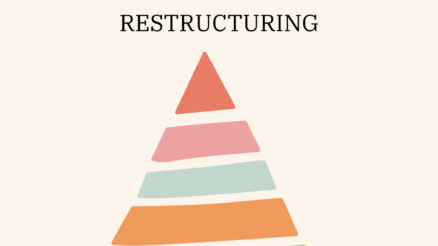Organizations must continuously adapt and evolve to stay competitive and meet the ever-changing demands of the market.
However, the success of any change initiative hinges on an organization’s readiness to embrace and navigate these transformations effectively.
Change readiness plays a pivotal role in determining whether a change effort will lead to triumph or turbulence.
To assess and strengthen this critical aspect, organizations need a reliable and well-designed tool: the Change Readiness Questionnaire.
This blog post highlights significance of change readiness, explore the key dimensions that influence it, and present a comprehensive questionnaire designed to gauge an organization’s readiness for change.
By leveraging this powerful assessment tool, businesses can proactively identify strengths, uncover potential challenges, and strategize to create a more change-ready culture that paves the way for successful transformations.
Let’s embark on this journey of understanding and harnessing change readiness to achieve sustainable growth and resilience in the face of change.
What is readiness for change?
Readiness for change refers to an individual’s or an organization’s preparedness, willingness, and ability to embrace and adapt to new initiatives, processes, or transformations.
It is a psychological and organizational state that influences how effectively a change effort can be implemented and sustained.
At the individual level, readiness for change is about an employee’s openness and acceptance of the proposed changes, their motivation to participate in the change process, and their willingness to learn and adapt to new circumstances.
It involves the degree to which employees perceive the benefits of the change and are willing to put in the effort and resources required to support its successful implementation.
At the organizational level, readiness for change is a broader concept that includes factors such as the organization’s culture, leadership support, communication strategies, employee engagement, and previous experiences with change.
A change-ready organization has a culture that values innovation and continuous improvement, leaders who champion and support change efforts, clear and transparent communication channels, engaged employees who feel empowered to contribute to the change process, and the ability to learn from past change experiences.
Assessing readiness for change is essential before embarking on any significant transformation, be it a process reengineering, technological implementation, or cultural shift.
By understanding the level of change readiness, leaders can identify potential obstacles, tailor their change strategies, and provide the necessary support to increase the likelihood of successful change implementation and sustained positive outcomes.
Factors Affecting Readiness for Change
Change readiness is influenced by various interconnected factors within an organization.
By addressing and nurturing these factors, organizations can enhance their change readiness and increase the likelihood of successful change implementation.
Let’s unpack each of these factors affecting readiness for change:
Organizational Culture
Organizational culture plays a pivotal role in determining the readiness for change. A culture that fosters innovation, open communication, and adaptability is more likely to be change-ready. If employees are accustomed to a culture that encourages learning, risk-taking, and continuous improvement, they are more likely to embrace new ideas and readily adapt to change. On the other hand, a rigid or resistant culture may create barriers to change, as employees might be hesitant to deviate from established norms and practices.
Leadership Support
Effective leadership is crucial for driving change readiness within an organization. When leaders actively champion the change, communicate its importance, and provide the necessary resources and guidance, employees are more likely to feel motivated and supported during the transition. Leaders must lead by example, demonstrate their commitment to the change, and address any concerns or resistance that may arise. Without strong leadership support, employees may perceive the change as uncertain or unimportant, leading to decreased readiness and potential resistance.
Employee Engagement
The level of employee engagement can significantly impact change readiness. Engaged employees are emotionally invested in their work and the success of the organization. They are more receptive to change as they feel valued and connected to the goals and objectives of the change effort. On the other hand, disengaged employees may be resistant to change due to feelings of apathy or detachment. Organizations that actively involve employees in the change process, seek their input, and recognize their contributions are more likely to have a higher level of change readiness.
Communication and Transparency
Effective communication is a linchpin in change readiness. Clear, timely, and transparent communication about the reasons for the change, its expected outcomes, and the steps involved is essential to gain buy-in from employees. When employees understand the purpose of the change and how it aligns with the organization’s vision and values, they are more likely to embrace it. Additionally, open communication channels that allow employees to express their concerns and provide feedback contribute to a more supportive and change-ready environment.
Past Change Experience
Previous experiences with change can influence an organization’s readiness for future changes. If past change initiatives were poorly managed, resulted in negative outcomes, or were met with resistance, employees may be more skeptical or apprehensive about new changes. Conversely, positive past experiences with successful change efforts can build confidence and a sense of readiness for future changes. Learning from past experiences, addressing previous challenges, and celebrating past successes can help shape a more change-ready culture.
Step-by-step Process of Readiness for Change Questionnaire Creation
By following this step-by-step process, researchers and organizations can create a well-designed and effective readiness for change questionnaire that provides valuable insights into an organization’s or individual’s preparedness to embrace and succeed in change initiatives.
A) Reviewing Existing Literature and Research
The first step in creating a readiness for change questionnaire is to conduct a thorough review of existing literature and research on the topic. This involves studying academic papers, case studies, and relevant publications to gain insights into the different dimensions and factors that influence readiness for change. This research phase helps in understanding the various theoretical frameworks and measurement tools used in previous studies.
B) Identifying Key Dimensions and Indicators
Based on the literature review and research findings, the next step is to identify the key dimensions and indicators that are most relevant to measure change readiness. These dimensions could include factors such as organizational culture, leadership support, employee attitudes, communication effectiveness, and past change experiences. Indicators are specific aspects or variables within each dimension that provide measurable data points for assessment.
C) Designing Clear and Unambiguous Questions
With the dimensions and indicators identified, the questionnaire creator can proceed to design the actual questions. It is essential to create clear, concise, and unambiguous questions that address each dimension and indicator. The questions should be easily understandable to the participants and avoid any potential confusion or bias. Open-ended, closed-ended, and Likert scale questions are common question types used in readiness for change questionnaires.
D) Pilot Testing the Questionnaire
Before administering the questionnaire on a larger scale, it is crucial to conduct a pilot test with a small sample group of participants. The pilot test helps in identifying any potential issues with the questionnaire, such as unclear questions, repetitive items, or difficulty in responding. Gathering feedback from the pilot participants enables the questionnaire creator to make necessary adjustments and improvements to enhance its validity and reliability.
E) Refining the Questionnaire Based on Feedback
After the pilot test, the questionnaire creator should carefully analyze the feedback received from the participants. Based on this feedback, necessary refinements and modifications should be made to improve the questionnaire’s overall quality. This may involve rephrasing questions, removing redundant items, or adding new questions based on the pilot test’s insights. The goal is to create a finalized version of the questionnaire that accurately captures and measures the readiness for change factors.
F) Validating the Questionnaire
Once the questionnaire has been refined based on the pilot test feedback, it is essential to validate its psychometric properties. This involves assessing the questionnaire’s reliability and validity to ensure that it consistently measures what it intends to measure and produces consistent results over time. Psychometric validation is a critical step to ensure the questionnaire’s credibility and accuracy in assessing readiness for change.
Here you can see a change readiness assessment tool.
Key Sections of Readiness for Change Questionnaire
There are usually 7-8 key sections into the readiness for change questionnaire but it should be flexible to meet the need of an organization or business.
Let’s learn more about these sections:
Section 1: Demographic Information
This section gathers basic demographic data about the respondents, such as their age, gender, job role, department, years of experience, and educational background. Demographic information helps in understanding how different groups within the organization perceive readiness for change and if there are any variations in responses based on demographic factors.
Section 2: Perception of Organizational Culture
This section assesses how employees perceive the organization’s culture regarding change. It includes questions that explore whether the organizational culture encourages innovation, supports risk-taking, promotes open communication, and fosters a positive attitude toward change. Understanding the prevailing culture is crucial as it sets the foundation for the organization’s readiness for change.
Section 3: Leadership and Management Support
In this section, the questionnaire assesses the level of support provided by leaders and managers during change initiatives. It includes questions about the effectiveness of leadership communication, the extent to which leaders involve employees in the change process, and whether leaders are seen as role models for embracing change. Strong leadership support is essential for influencing employees’ attitudes and actions during change
Section 4: Employee Engagement and Empowerment
This section gauges the level of employee engagement and empowerment within the organization. It includes questions that explore whether employees feel motivated and enthusiastic about their work, have a sense of ownership and control over their tasks, and believe that their contributions are valued. Engaged and empowered employees are more likely to embrace and drive change.
Section 5: Communication and Transparency
This section assesses the effectiveness of communication and transparency regarding change initiatives. It includes questions about the clarity and frequency of communication related to the changes, the channels used for communication, and whether employees feel well-informed about the reasons and expected outcomes of the change. Transparent and timely communication fosters trust and understanding during times of change.
Section 6: Previous Change Experience
This section explores employees’ past experiences with organizational changes. It includes questions about their perceptions of past change efforts, whether the changes were successfully implemented, and how they were supported during those times. Past change experiences can significantly influence current readiness for change, as positive experiences can build confidence and negative experiences may lead to resistance.
Section 7: Willingness to Adapt and Learn
This section examines the willingness of employees to adapt to new situations and their openness to learning new skills or approaches. It includes questions that assess their receptiveness to change, their ability to cope with uncertainty, and their attitude toward continuous learning and improvement. A positive willingness to adapt and learn is a critical aspect of change readiness.
Section 8: Overall Change Readiness Assessment
In this final section, the questionnaire includes questions that provide an overall assessment of the organization’s or individual’s readiness for change. These questions may ask respondents to rate their overall readiness on a scale or provide a summary of their readiness based on the responses from previous sections. This section helps to consolidate the data and obtain a comprehensive view of change readiness.
How to Administer the Readiness for Change Questionnaire?
Given below are the steps for administering the readiness for change questionnaire, organizations can effectively collect meaningful data and gain a deeper understanding of their readiness to navigate and embrace change successfully.
The insights gathered from the questionnaire will help in developing targeted strategies to strengthen the organization’s overall change readiness and foster a culture of adaptability and resilience.
Choosing the Right Participants
Before administering the questionnaire, it is crucial to identify the appropriate participants who will provide relevant and valuable feedback. Depending on the scope of the assessment, participants may include all employees in the organization or a representative sample from different departments and hierarchical levels. Selecting a diverse group of participants ensures that the questionnaire captures a comprehensive perspective on readiness for change.
Selecting the Method of Administration (Online, Paper, etc.)
The method of administration can significantly impact the response rate and the ease of data collection. Common methods include online surveys, paper-based questionnaires, or a combination of both. Online surveys are convenient and can reach a larger audience, while paper-based questionnaires may be suitable for participants with limited internet access or when face-to-face interactions are preferred. The chosen method should align with the organization’s culture, resources, and the preferences of the participants.
Ensuring Anonymity and Confidentiality
To encourage open and honest responses, it is essential to ensure the anonymity and confidentiality of the participants. Clearly communicate to the respondents that their individual responses will be kept confidential and that their identities will not be linked to their answers. Assuring anonymity helps to eliminate potential biases and fears of repercussions, leading to more candid and accurate feedback.
Communicating the Purpose and Importance of the Questionnaire
Before administering the questionnaire, provide clear and transparent communication about its purpose and importance. Explain to the participants why their feedback is valuable and how the data will be used to improve the organization’s readiness for change. Emphasize that their input will directly contribute to shaping positive changes within the organization. This communication helps in gaining participants’ trust and willingness to engage in the assessment process.
Setting a Reasonable Timeline
Establish a reasonable timeline for completing the questionnaire to ensure an adequate response rate and to accommodate participants’ schedules. Communicate the deadline for questionnaire submission and, if needed, send reminders as the deadline approaches to encourage participation.
Offering Support and Assistance
Some participants may have questions or encounter difficulties while completing the questionnaire. Offer support and assistance, such as a helpline or contact person, to address any concerns or technical issues. This approach ensures that participants have a positive experience during the assessment process.
Data Collection and Analysis
After the questionnaire has been completed by the participants, gather the data and proceed with its analysis. Depending on the number of participants and the complexity of the questionnaire, data analysis may involve statistical tools, qualitative coding, or a combination of both. Analyzing the data will provide valuable insights into the organization’s readiness for change and inform decision-making for future change initiatives.
Final Words
The readiness for change questionnaire is a powerful tool that offers organizations a comprehensive understanding of their preparedness to navigate the complexities of change. By meticulously following the step-by-step process of questionnaire creation, which includes reviewing existing literature, identifying key dimensions, designing clear questions, conducting pilot tests, and refining based on feedback, the questionnaire can provide valuable insights into critical aspects of change readiness.



